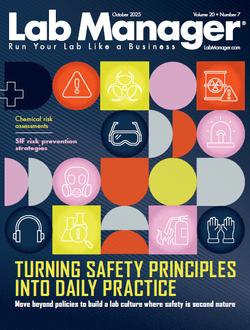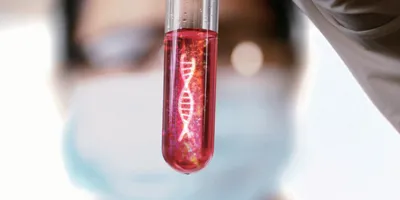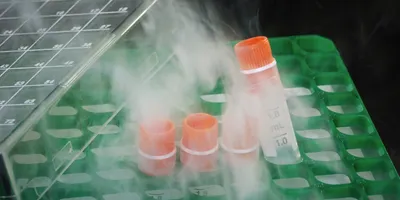Microplastics—tiny particles of plastic debris less than five millimeters in size—have permeated nearly every environment on Earth. From ocean depths to alpine snow, from the food we eat to the water we drink, microplastics are nearly unavoidable. These particles result from the degradation of larger plastic waste, synthetic fibers, and industrial processes, and their pervasive presence raises significant environmental and health concerns.
Recent research from Boston University introduces a troubling new dimension: microplastics may be actively promoting antibiotic resistance, a global public health crisis that claims nearly 5 million lives each year. While antimicrobial resistance (AMR) has traditionally been linked to overprescription and misuse of antibiotics, this new study suggests that the microenvironmental conditions created by microplastics can accelerate bacterial resistance in a unique and alarming way.
This article delves into the mechanisms behind this phenomenon, the tools used in the research, and the potential global implications—particularly in under-resourced, high-density communities such as refugee settlements.
How Microplastics Influence Bacterial Behavior and Antibiotic Resistance
A New Habitat for Microbes
Microplastics are more than inert pollutants—they offer a colonization surface for bacteria. In the Boston University study, researchers observed that Escherichia coli (E. coli) bacteria readily adhered to microplastic surfaces, forming biofilms—protective microbial communities enclosed in a self-produced matrix.
This biofilm serves as a defensive barrier, shielding bacteria from antibiotics and immune responses. Although biofilms can form on a variety of surfaces, including glass and metals, the microplastic-associated biofilms observed in this study were significantly denser and more resistant.
“We found that the biofilms on microplastics, compared to other surfaces like glass, are much stronger and thicker, like a house with a ton of insulation,” said Neila Gross, a PhD candidate and lead author of the study.
Microenvironmental Influence
Antibiotic resistance often depends on the local microenvironment—the immediate surroundings where microbes grow and interact. In the controlled lab experiments, microplastics appeared to alter this microenvironment, encouraging bacterial behaviors that support resistance.
The team conducted repeated trials using different types of plastic and various antibiotics. In all combinations, bacteria on microplastics showed an elevated resistance to multiple drugs, a finding that persisted even when the plastics were removed. This suggests that the bacteria retained adaptive traits, likely due to prior biofilm formation and environmental conditioning.
“We’re demonstrating that the presence of plastics is doing a whole lot more than just providing a surface for the bacteria to stick—they are actually leading to the development of resistant organisms,” said Muhammad Zaman, a biomedical engineering professor at BU.
Research Methods Used to Study Microplastics and Antibiotic Resistance
Experimental Setup
The BU team designed a closed-system experimental protocol where E. coli cultures were exposed to microplastic particles under controlled laboratory conditions. Key elements of their methodology included:
- Plastic Type Variation: Common microplastics such as polyethylene (PE) and polystyrene (PS) were tested to assess consistency across polymer types.
- Antibiotic Challenges: The bacteria were exposed to standard antibiotics (e.g., ampicillin, tetracycline) after colonizing the microplastic surfaces.
- Biofilm Analysis: Using optical microscopy and possibly spectroscopic techniques, the researchers measured biofilm density, thickness, and antibiotic penetration failure.
Reproducibility and Controls
To ensure robustness, the team repeated experiments under varying conditions and compared microplastic surfaces to inert controls such as glass. Despite changes in the antibiotic type or plastic polymer, the antibiotic resistance effect was consistent, pointing to a plastic-related mechanism rather than an experimental artifact.
Public Health Risks of Microplastics and Antibiotic Resistance
Vulnerable Communities at Risk
The implications of this study are especially serious for refugees and displaced populations, where plastic waste and poor sanitation create fertile ground for bacterial infections. Crowded conditions in refugee camps facilitate rapid microbial transmission, while inadequate access to healthcare limits treatment options.
Advanced Lab Management Certificate
The Advanced Lab Management certificate is more than training—it’s a professional advantage.
Gain critical skills and IACET-approved CEUs that make a measurable difference.
“There is certainly a concern that this could present a higher risk in communities that are disadvantaged,” Zaman stated. “Only underscores the need for more vigilance and a deeper insight into [microplastic and bacterial] interactions.”
According to the UNHCR, over 122 million people were forcibly displaced as of 2024. These populations are increasingly at risk of being exposed to drug-resistant superbugs, with microplastics adding another layer of complexity.
Environmental and Social Dimensions
Historically, antibiotic resistance has been framed as a behavioral issue, such as incomplete antibiotic courses or overprescribing. But the Boston University study underscores the environmental contributors to AMR—specifically, the unintended consequences of plastic pollution.
“There is nothing a person has done to be forced to live in a particular environment, and the fact is they are at a higher exposure to resistant infections,” Zaman explained.
This shifts the narrative from individual responsibility to systemic and environmental change—an important transition for future health policies and global public health strategies.
Future Research on Microplastics and Drug-Resistant Bacteria
Translational Studies in the Field
While the laboratory results are compelling, researchers acknowledge the need to investigate whether these findings hold in real-world conditions. Gross and Zaman plan to collaborate with international partners to conduct field studies in refugee camps and other high-risk environments to:
- Track the presence of microplastic-associated resistant bacteria.
- Assess environmental plastic loads and microbial profiles.
- Understand local sanitation and healthcare access barriers.
Mechanistic Exploration
On the molecular level, the team aims to identify how plastic surfaces modify bacterial behavior. One theory is that plastics initially repel water, allowing bacterial attachment, but later absorb moisture and potentially even antibiotics, blocking the drugs from reaching their microbial targets.
A particularly troubling observation was that even after microplastics were removed, bacteria previously exposed to them maintained heightened resistance, implying long-term evolutionary or epigenetic shifts.
Final Thoughts on Microplastics and Bacterial Resistance
The growing body of evidence on microplastics suggests they are more than an ecological nuisance—they may be actively fueling one of the greatest public health threats of the 21st century: antibiotic resistance. Through innovative research methods and a focus on vulnerable populations, the Boston University team has illuminated a dangerous synergy between pollution and microbial evolution.
As the global community seeks solutions to AMR, environmental factors like microplastics must be integrated into surveillance, policy, and intervention frameworks. Continued research, combined with global cooperation, is essential to protect both planetary and human health from the compound threats of pollution and drug resistance.
Frequently Asked Questions About Microplastics and Antibiotic Resistance
What are microplastics and why are they dangerous?
Microplastics are tiny plastic particles less than 5mm in size that originate from larger plastic debris. They are harmful because they infiltrate ecosystems, food chains, and even human bodies, potentially exacerbating health risks like antibiotic resistance.
How do microplastics contribute to antibiotic resistance?
Microplastics provide surfaces where bacteria like E. coli can form protective biofilms. These biofilms enhance bacterial survival against antibiotics, potentially leading to the development of drug-resistant strains.
Why is antibiotic resistance from microplastics a public health concern?
Antibiotic-resistant bacteria are harder to treat and can spread rapidly, especially in overcrowded and underfunded areas like refugee camps. Microplastics may worsen this crisis by increasing the resilience of harmful bacteria.
Can removing microplastics reverse bacterial resistance?
Research shows that bacteria exposed to microplastics retain their heightened resistance even after the plastics are removed. This highlights the long-term danger of microplastic pollution and the need for preventative action.













